From a Miles Davis solo crooning in a jazz lounge to the eerie echo of taps in the crisp morning air mourning the loss of a military service member to the blaring solo in a movie score announcing the hero’s impending triumph, modern trumpet pieces add dynamic musical flavor to our lives. What most people do not realize is that the trumpet actually represents an entire musical family.
In this article, we offer a comprehensive guide to the different types of trumpets, their history, and what makes them unique.
The Bb Trumpet
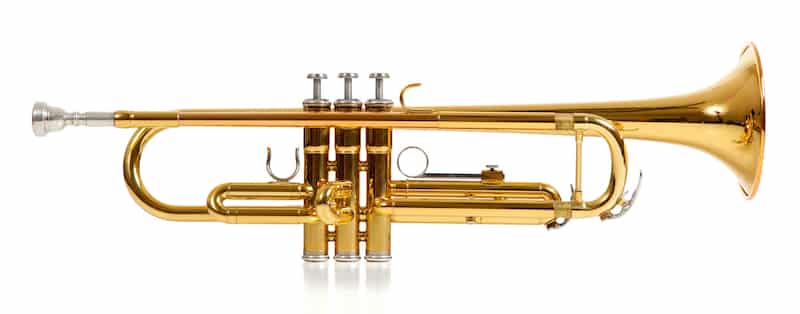
The first few trumpets discussed are named after the keys in which they play.
When most people think of a trumpet, it’s most likely that the Bb Trumpet is the one that comes to mind.
The Bb trumpet is known as a transposing instrument, because when you play a C note, what you actually hear is a concert Bb pitch note.
Bb trumpet parts are, therefore, written according to this transposition and dependent upon the key of the song.
It is not only the most common trumpet and the one that most beginner brass players learn first, but it is also one of the most commonly played and highlighted brass instruments in marching bands and orchestras.
The Bb trumpet was invented in 1800s France to replace the cornet (discussed later in the article) for a brassier sound in orchestral symphony music.
Previously, the F and G trumpets were used to accomplish this, but they were large instruments, so the smaller Bb and similar trumpets eventually replaced those entirely.
It was also a pivotal instrument in the development of jazz music, in which it plays a starring role to this day.
The Bb trumpet is also the longest type of modern trumpet as, if you uncoiled it, it would be over four feet long!
This build is responsible for the richer and more mellow tone of the Bb trumpet as compared with the C, D, Eb, and piccolo trumpets discussed next.
The C Trumpet
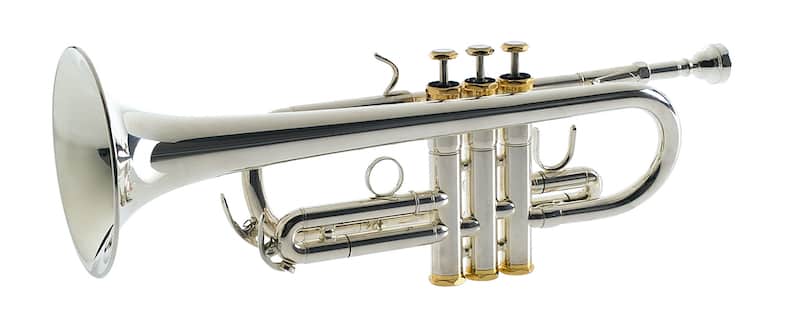
The C Trumpet, you guessed it, plays in the key of C which means that when you play a C note, the instrument does not transpose it, and you hear a straight concert pitched C.
For this reason, C trumpets are often played for solo pieces where an instrument in a different key would require extra fingering and tuning work.
The C trumpet also produces a brighter sound one pitch above the Bb trumpet, making it the best choice for orchestral ensembles and tunes that are written to highlight this type of sound.
The C trumpet made its debut in France right around the same time as the Bb trumpet as part of the movement to create a brassier sound than the cornet without the bulk of the F and G trumpets.
At first glance, the C trumpet looks very similar to the Bb trumpet, but a closer look will reveal slightly shorter tubing, which is responsible for the distinction in sound type.
The D/Eb Trumpet
The invention of the Bb and C trumpets got musicians excited about the diversity in sound they were able to create.
During the Baroque music period, the D Trumpet was created to add an even more bright and piercing sound.
The D trumpet is so piercing, in fact, that it is meant to highlight pieces and reach notes that other instruments cannot reach.
You will, therefore, not find whole pieces or solos written for the D trumpet.
Most famously, you will hear the D trumpet throughout Hendel’s Messiah.
Similar to the C trumpet, the D trumpet produces its distinct sound as a result of a slightly shorter build and tubing.
Another thing worth mentioning is that you can also get an Eb trumpet, which is actually a modification to the D trumpet!
A D trumpet comes with additional tubing and, in some cases, a fourth valve.
Players add the additional equipment to reach the desired Eb pitch.
It sounds like a lot of work, but it makes all the difference in adding the desired tone to a particular piece.
The Piccolo Trumpet

Piccolo is Italian for small, and that is exactly what a Piccolo Trumpet is – the smallest member of the trumpet family.
This little trumpet technically plays in the key of Bb, one octave above the Bb trumpet, and so it is also a transposing instrument.
With its higher, brighter pitch and range, the piccolo trumpet was effectively created as an alternative to the D trumpet.
Invented in the early 1900s and predominantly used in religious music, but you’ll also hear its starring role in The Beatles hit song Penny Lane.
The decision of whether to use a D trumpet or a piccolo trumpet is up to the stylistic preference of the player, the occasion, the ensemble, and the particular piece.
It also holds the option for an additional piece of tubing that allows musicians to play in the key of A.
The piccolo trumpet owes its tone, pitch, and range to its short and uniquely arranged tubing and its fourth valve.
The Pocket Trumpet

People often confuse the piccolo trumpet with the pocket trumpet or incorrectly assume that they are interchangeable.
Whereas the piccolo trumpet is a small trumpet whose size difference contributes to an entirely different sound, the Pocket Trumpet is essentially a Bb trumpet in sound that has been wound tighter to make it smaller and more ‘pocket‘ sized.
Some players report a slightly warmer sound quality with the pocket as opposed to traditional Bb trumpet, on account of how tightly wound the coils are.
For the most part, players enjoy this smaller version of the Bb for convenience.
For more information, check out our article on the best pocket trumpets here.
The Natural Trumpet
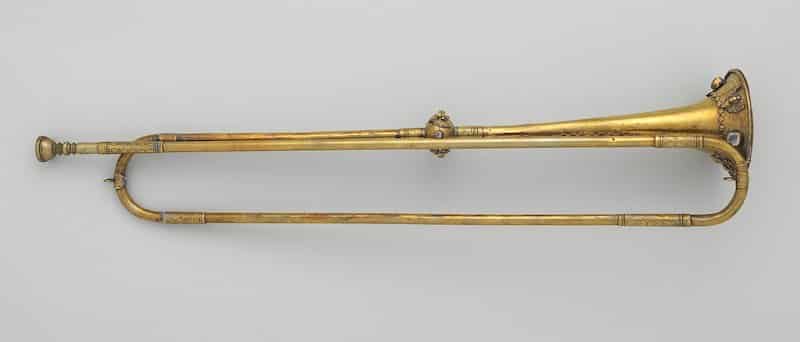
Before any of the above trumpets were invented for the ease of creating specific notes, the original trumpet had no valves at all.
Today, these instruments are known as the Natural Trumpet, which was a popular instrument of the Baroque period.
They were typically played in the key of D, which was the most common key for music of that time.
Players changed notes entirely through embouchure, or lip positioning and flexibility which is known as the harmonic series.
All trumpet players know how to do this because it is how you get different notes out of the same valve combinations.
Playing a natural trumpet simply involves a great diversification of this skill.
With a total of about 8 feet of tubing, the natural trumpet is larger than the Bb trumpet.
The Bugle
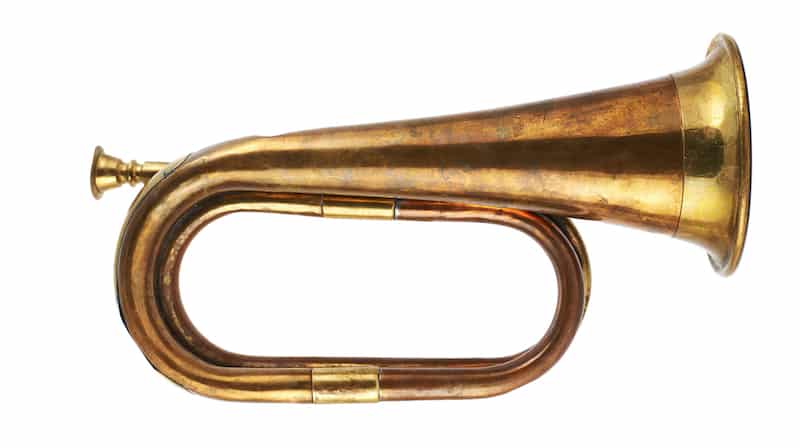
In the early 1800s, the natural trumpet gave way to the Bugle.
This valveless trumpet cousin was created and used almost exclusively for military purposes, as its simple coil structure produces an echoing tone quality ideal for military services.
Here’s a video of one being played in a military remembrance service.
Most common in the current bugle corps is the soprano bugle created in a low key of G.
Despite most bugles being played without valves using the harmonic series, nowadays, many modern bugles do include valves for ease of play and note change.
The Slide Trumpet
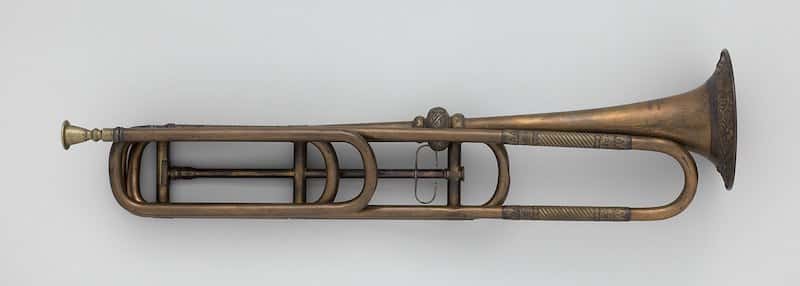
During the 15th-century Renaissance music period, the Slide Trumpet was a very popular instrument.
You might find it unsurprising that the slide trumpet eventually gave birth to what we now know as the trombone, a popular lower-toned brass instrument.
Although the slide trumpet employed a mechanism similar to that of the trombone, using the slide to achieve different notes, the build was very distinct.
Rather than holding the instrument in place and moving the slide, slide trumpet players hold the mouthpiece and move the majority of the instrument.
With the advancement of more modern trumpet varieties, the slide trumpet is certainly cumbersome and difficult to play, but it makes for a fun skill to showcase!
The Flügelhorn

Created in Germany in the mid-1800s, the Flugelhorn is another trumpet cousin that was invented to add range to the trumpet’s sound quality.
The flügelhorn has a distinctly larger and looser coil than the trumpet, which produces a softer sound.
This instrument is, therefore, well suited for jazz ballads and elegies requiring longer and fuller notes.
The Cornet
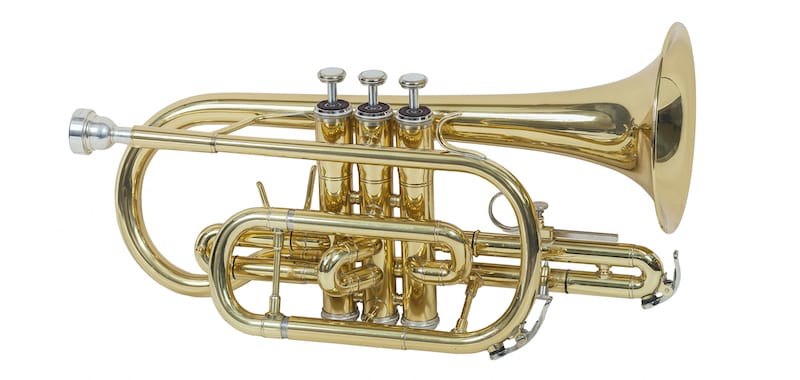
Last but not least, we come full circle to the Cornet, previously mentioned as the precursor to the Bb trumpet.
The cornet also plays in the key of Bb, but its tone is more mellow than that of the other trumpet instruments due to its more compressed build.
This also makes it easier to hold and ideal for new players to learn.
For more information, check out our post here about the differences between a trumpet and a cornet.
That’s it for Trumpet Types
That wraps up our article on the different trumpet types you might see, and we hope you found it helpful.
Long before its musical debut, some variations of the trumpet have been used for military and ceremonial purposes for over 3000 years.
Many different nations and eras of music have left their mark on the evolution of the trumpet, creating a diverse family of brass instruments, each member with a unique purpose and quality.
The different trumpet styles and cousins presented in this article expose your many possibilities as a musician.

